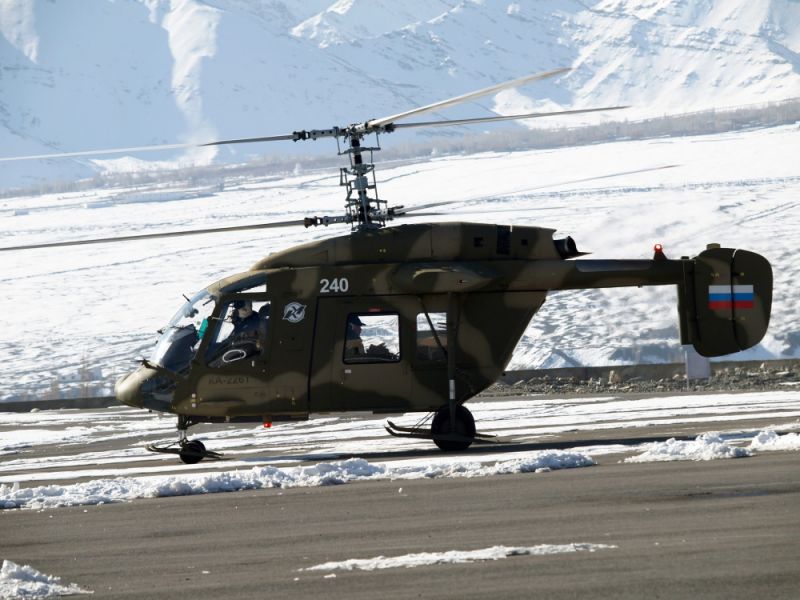Will Ka-226T ever be donning Indian colour?
By Rohit Srivastava

India’s search for the replacement of its French-made Cheetah and Chetak light Utility helicopters is still pending after two decades. Meandering from Bell to Ka226T, Indian policymakers have failed to fulfill the need to replace Cheetah Helicopter (LAMA SA 315B) and Chetak (Aloutte III) both designed in the 1960s and first inducted in the 1970s in the Indian armed forces. HAL has been manufacturing them since the 1970s. It has an unlimited licence to manufacture them. The two choppers have served India very well but need to be replaced.
India floated a global tender some two decades back for 197 light utility helicopters. After various tenders according to the requirement, India decided to induct Russian Ka-226T, a coaxial rotor blade light utility chopper through an India-Russia joint venture, Indo-Russian Helicopters Limited, where HAL owned 50.5% of the share and the rest was divided among Russian Helicopters (42%) and Rosoboronexport (7.5%). The JV was incorporated in May 2017. The recently inaugurated HAL’s Tumkur helicopter facility was originally planned for the local manufacturing of the Ka-226T.
The orders for the production of the choppers were never placed. In the meantime the lighter version of ALH Dhruv, HAL designed and produced a multi-mission helicopter, Light Utility Helicopter (LUH), 3-Ton class, was ready for the light utility role. With the availability of LUH, an order for Ka-226T was never placed. Indian forces have ordered a limited order of 12 of these choppers last year. Indian Army is expected to order a total of 110 to replace its vintage utility choppers.
Speaking on the Ka-226T project, during the AeroIndia, C.B. Ananthakrishnan, Director (Finance) & CFO with Addl. Charge of Chairman and Managing Director, said, “Yes a joint venture has already been established and the JV has also submitted the quote. The TUMKUR facility was originally designed for Kamov and now also sufficient capacity is available in the facility. If the order comes through we would be able to manufacture Kamov over there… Whenever order will come.”
Besides the arrival of LUH, India has asked for a higher percentage of indigenisation in locally produced helicopters. The indigenous content is roughly around 33 percent at present. The tender requirement is 70 percent Indian content.
According to Vladimir Drozhzhov, Deputy Director of the Russian Federal Service for Military-Technical Cooperation, while speaking to the Russian news agency TASS, during the Aero India’23 said, "Unfortunately, the talks with our Indian partners on the level of localization for production of the Ka-226T helicopter are nearly frozen. As the Republic of India Defence Ministry has stated, they are dissatisfied with the localization level proposed by the joint venture. Our Indian partners are now being presented with a revised proposal for the localization of helicopter production in India, which calls for a localization level of 70 percent. The Indian side is expected to submit its decision on continuing the negotiation process.”
India is considering “purchasing fully assembled Ka-226Ts”, he added. This is a fair possibility given the unique characteristics of this chopper.
During the Dubai Airshow ’21, Russia unveiled the improved Ka-226T. The improved version helicopter received its certifications last year.
According to the manufacturer Russian Helicopters, the modernized Ka-226T is a multi-mission light twin-engine gas turbine helicopter.
The manufacturers call the tail-less modular design of the chopper - the “flying chassis” concept – behind the cockpit, modules specifically designed for any role can be attached which allows the use of the same helicopter for a variety of roles. It requires four people to replace any module within a half-hour. “The upgraded Ka-226T is capable of flying at altitudes up to 6,500 meters above sea level, while the payload of the helicopter reaches 1,500 kg with a maximum flight weight of up to 3,800 kg,” said Anton Korolev, Deputy General Director of the Russian Helicopters holding for sales of civil helicopter equipment, in a statement.
The most significant feature of the Ka-226T is the proprietary twin-rotor coaxial design, which greatly simplifies the piloting technique, and ensures high maneuverability and stability of the helicopter even under high wind loads both in flight and during landing. They also provide a better thrust-to-weight ratio which comes specifically in handy in the hills and sea operations. The twin engines provide additional flight safety, in case of failure of one engine in challenging flight operations, the other can safely land the helicopter.
Since the helicopter does not have a tail rotor, it is compact and hence much more suitable for flying to hills and ships. There is also a naval Ka-266T with foldable blades. Indian Navy already operates coaxial Ka-31 helicopters.
HAL has demonstrated the ability to design and develop helicopters as per the requirement of the armed forces. There are still missing capabilities. One of them is designing their engine and another is a coaxial rotor system. Given the Indian requirements for flying in hills and remote areas during HADR operation a compact chopper would be very helpful.
The Ka-226T project can provide India with the much-desired technology. Russia is the clear leader in this technology. The US is also developing S-97 and SB-1 Defiant for its future helicopter programmes. It is a must-have technology and the Ka-226T JV is a quicker way to acquire it.



